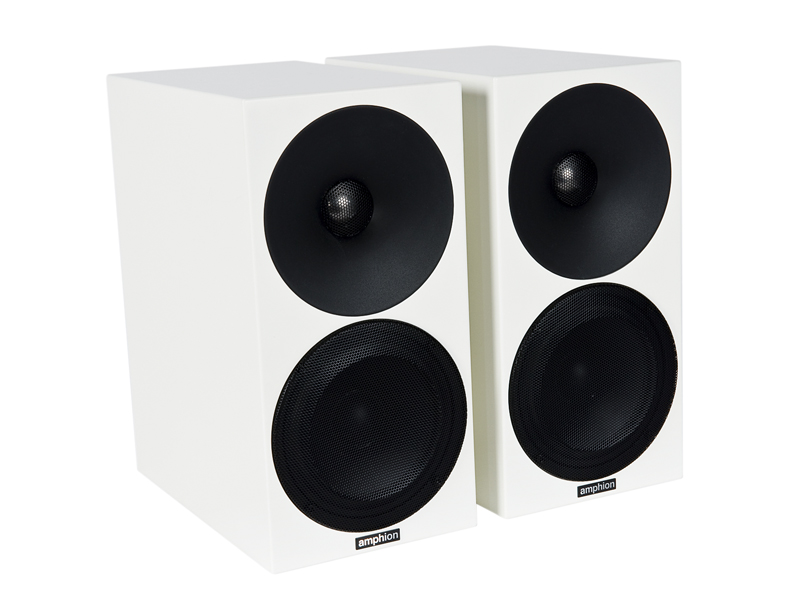TechRadar Verdict
Attractively neutral and versatile in positioning, it works well with modest systems, but ultimately lacks some dynamic expression and vigour, as well as bass weight
Pros
- +
Neutral and versatile in positioning
- +
Works well with modest systems
Cons
- -
Lacks some dynamic expression and vigour
- -
Also lacks some bass weight
Why you can trust TechRadar
This ice-cold, sharp-edged, black-on-white two-way standmount loudspeaker sounds smooth, evenhanded and essentially neutral. The baby brother of the larger Amphion Helium 520 floorstanding loudspeaker, the 510 also includes the best bits of its elder sibling, the key component being the 'waveguide' surrounding the tweeter.
A variation on the horn theme, with a truncated throat and a very wide flare, it loads the tweeter and has several benefits. One is that it allows the crossover point to be an octave lower than usual (at around 1.6kHz), which moves it below the most critical part of the audio band.
It also helps match the acoustic sizes of the mid/bass and the treble drivers, which should benefit the crossover transition. Also, lining up the voice coil of the recessed tweeter with that of the cone drive unit should improve time alignment.
Whole lotta love
Certainly, there can be no complaints about the high standard of presentation here. The 135-millimetre mid/bass unit deploys a 110-millimetre flared paper cone and a cast alloy basket, and the drivers appear to be good quality. The relatively modest sensitivity does indicate a rather small magnet, however.
The 25-millimetre titanium dome tweeter, on the other hand, is sensibly protected by the depth of the waveguide and a mesh cover.
At £750 per pair, it does seem on the pricey side, especially as good-quality stands will also be required, partly because of the gulf that's grown between European and Chinese production costs. In a European context, this loudspeaker represents respectable value.
Sign up for breaking news, reviews, opinion, top tech deals, and more.
The 510 is available in black or white – with black or white grilles and waveguides – or in a choice of birch, cherry or walnut real wood veneers. The latter is fitted with black grilles and waveguides and carries a price premium.
Versatile performer
Even mounted well clear of walls, the bass end sounds a trifle heavy with some material. In fact, the best results are found with the supplied bungs in place and the speakers quite close to a wall.
Connected onto the end of a top-quality audiophile system, this Amphion seems lacking in dynamic expression. Stereo focus is good and the sound is notably free from any boxiness, but instrumental textures tend to be glossed over. There's a lack of tautness and tension, while the sound can get congested with complex and bass-rich material.
Used with more modest 'budget' components, however, the 510 actually works rather well. It might not aspire to high-end standards, but it doesn't exaggerate the differences between components or emphasise any limitations – good news in the context of a sensible market.
The budget Cambridge Audio CD player and amplifier I used admittedly have obvious limitations compared with my usual upmarket components, but to give it its due, the Helium 510 doesn't emphasise these deficiencies.
Results are a little bland and boxier, but the sound remains tidy and smooth. You'll need a little extra volume is required to make speech intelligible, however.
This little speaker might not set any records for either audiophile dynamics or ultimate value for money, but it is an attractively present and sonically well-judged package, nonetheless.
Impressively, it also discreetly slips into the listening room and won't embarrass the type of components to which it is likely to be coupled.
Follow TechRadar Reviews on Twitter: http://twitter.com/techradarreview
